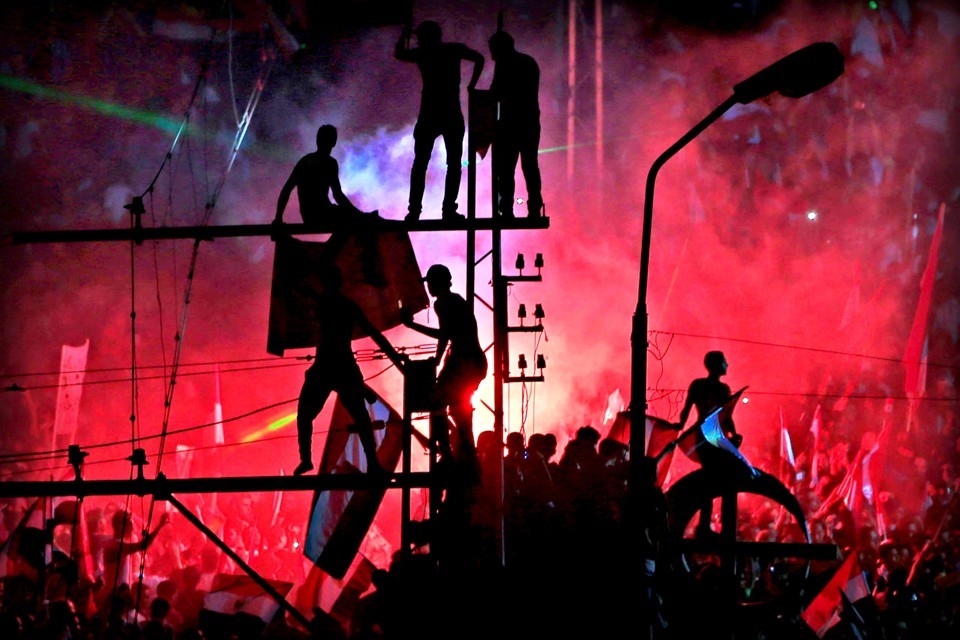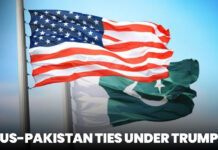Editor’s Note
The narrative post the Arab Spring has neither been what the masses wanted nor exactly as the leadership would have desired. It has led to much bloodshed even as the aspirations of the people have not been fulfilled. The author provides a narrative of the cascading affects of Arab Spring engulfing the whole region, only for Tahrir Square to lose relevance as events unfolded, thereafter.
Loose Springs of the Arab Spring
History has its own way of course correction through unpredictable events, occasionally accompanied by rude shocks to the political conscience of the rulers and observers alike. In December 2010 a harassed hawker, immolating himself on the streets of Tunis, a unique and unusual way of protest in Islam, unwittingly sent the Arab world in to a tizzy. Initially, the absolute rulers and their western friends assessed it to be a mere law and order issue and dealt with it in a harsh and highhanded manner but the malaise and the discontent were far deeper; compounded by neglect of people at the grassroots level. The weeks of unremitting protests that followed witnessed the fleeing away of long time ruler Ben Ali that threw the genie out of the bottle.
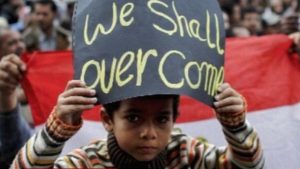
People in the Arab world realised the import of their collective action, aspirations and protests. They had hoped that in the times to come they would be able to choose their representatives and usher in a sort of democracy that would give them a voice, and serve their interests and wellbeing better. It was also hoped that political Islam and Islamic traditions would find a rational representation in the polity that would emerge.
The road was to be tough and risky while the outcome was imponderable, but the die was cast and the domino’s effect began taking its toll in the other countries in the Middle East and North Africa. To impose their lexicon, the westerners began to call it the Arab Spring celebrating it as a victory of the people and hence the ushering in of the democracy, hopefully modelled after Westminster. The western democrats have in any case always avidly looked for new client states. Although Tunisia has gone through an initial deeper turmoil it can also boast of a partial success story and could be a possible role model among the other Arab countries that followed suit and are still struggling with the aftermath of bloody revolutions. 2011 was definitely a watershed year in the history of the Arab states that would have ramifications for the rest of the world.
It was not the first time that the Arab world had witnessed revolts and revolutions but those earlier ones were mostly driven by revolutionary thought processes imbibed by the elites and intellectuals who fomented the desire to be liberated from the external domination be it from the Ottomans or from the colonial regimes like the British,
French or the Italians who tended to divide the booty liberally among themselves. However, the 1940s & 50s witnessed the end of the colonial rule in most of the Arab countries as the winds of freedom were chastising the chains of subjugation all across the world.
Unfortunately, these newly liberated states were subjugated by autocratic rulers, whether monarchist or republican, who did not care to create institutions, or for that matter a systems of checks and balances on the ruling elites that were soon perceived as corrupt. Any efforts to challenge the status quo were stymied through continued highhandedness or doling out favours and cash while keeping the army and security agencies at the high table of governance. It was essential for the prolonged survival of the unquestioned regimes and their proponents. However, in the Arab landscape the tribes play an important and significant role which needs to be factored in, or else peace will have questionable dividends.
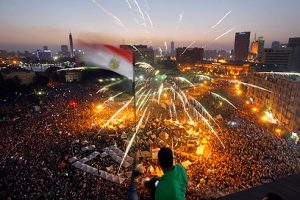
The only surreptitious growth was that of Political Islam couched in socio economic activities as the autocratic rulers considered it a challenge to their authority and banned the politico-religious leaders and organisations like Muslim Brotherhood. But, they continued to socially nurture their constituencies. Dividends were paid out in the wake of the 2nd Arab awakening when they were able to secure substantial political space in several countries and even won and lost power like in Egypt with elected President Morsi’s removal. The Tahrir Square aspirations were dissipated in a short while.
Although former President Mubarak was removed from power and later even exonerated of bloodshed charges, his military vestiges headed by General Sisi remained in the saddle with Egypt virtually going the full circle. In Libya, the Muslim Brotherhood, through its political arm Justice and Construction Party, eked the benefits and remained a force to reckon with. In Tunisia, Islamists in the form of Ennhada Party continued to be a partner in governance with their willingness to change and compromise and remain a political force even if in the first leg they could not deliver on people’s expectations, perhaps due to their inexperience losing the mandate in the following elections.
Even Jordan had allowed the Brotherhood to continue as a political entity participating in their democratic process over decades, since fundamentally they continued to propagate support for the King. But during the last few years, engineered divisions in the Brotherhood’s rank and file have been witnessed thereby weakening their political poltential. The religio-political parties and institutions remain a force to contend with as their popular support base remains well embedded. Their going underground like before, is unlikely!
The revolutions under the rubric of Arab Spring have shaken the weak foundations of the polity and society and created havoc and further discontent among the disgruntled population. Libya with its divisive political forces, spurt of uncontrolled militia groups, unchecked surfeit supply of heavy and light arms to the warring groups, weak institutions leading to emergence of three rival Prime Ministers and competing parliamentary outfits, wreaked havoc for the oil rich nation. General Haftar, controlling the Eastern part and fighting against Islamists, has General Sisi of Egypt as his icon, looking to wield greater control. He will not allow a settlement unless the interests of his military and political leadership are accommodated in the final outcome.
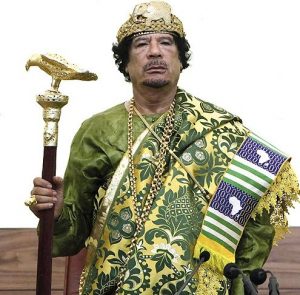
Divided loyalties and areas of influence and oil wealth garnered benefactors from among the regional countries like Egypt, Turkey ,Sudan, UAE, Saudi Arabia and Qatar, and also major western countries whose unplanned military intervention to dislodge Gadhafi is largely responsible for the current state of affairs.
US and other major powers had a myopic view and abandoned the war ravaged country to the delight of Al Qaeda , ISIS ( Daesh) and several other fundamentalist groups that kept on mutating into more rabid ones. In the early days of post Gadhafi years, scores of Libyan fighters were sent to liberate Syria from Assad –another failed experiment – putting that country into worse than the Iraqi panorama. All these external interventions and import of rabid militias and fundamentalist mercenaries into the simmering war zones have ensured a prolonged conflict and instability. Onset of extremist outfits and terrorism in these countries was the imposed gift of the intervention like that in Iraq and Libya. Unfortunately, this, in turn, again provides a pretext for further intervention and the vicious cycle will continue.
Although the onset of Arab unrest brought instability in several countries, especially where overt external intervention was applied, its genuine import and meaning reverberated in shaping the aspirations of the youth and the common people. The status quoist leaders in the Arab world were forced to confront and control it through constitutional changes, political and economic reforms to address the immediate issues by firing of governments like in Jordan and Morocco or through doles and promises like in Saudi Arabia, Kuwait and Qatar.
It was a clarion call for the Gulf monarchies who were already trying to cope up with low oil revenues and 2008 financial crisis. Inspite of a restrained purse, they tried to contain the radiating impact from countries like Egypt, Libya and Tunisia where over four decades old rulers were dislodged by public outcry in no time. However, the disastrous consequences in countries like Iraq, Libya, Syria and Yemen and even Egypt did rationalise the public response in several other countries in the region where violent outbreaks against the current regimes were averted. However, an uncertain and unquantifiable continuous pressure became imminent that resulted in further reforms and change. Business as usual, was not a given any more.
Even a cursory look at the region and the aftermath of the so called Arab Spring turning into a Siberian chill does not augur well with countries like Libya, Yemen, Iraq and Syria. These have become the launch pads and hotbeds of terrorism. There appears to be no international strategy to counter the growing menace and instability. Perhaps, if the narrow interests of the major and regional powers were kept at bay some resolution could have been achieved. The international community, especially those who intervened and unleashed disaster under the garb of Right to Protect (R2P) must surely undertake “Responsibility to Reconstruct (R2R) and help contain the unacceptable situation. If the fires keep smouldering, it might even engulf them and their remaining surrogates.
Anil Trigunayat
(Anil Trigunayat is the former Indian Ambassador to Jordan, Libya and Malta)
(Disclaimer: The views and opinions expressed in this article are those of the author and do not necessarily reflect the official policy or position of BharatShakti.in)




